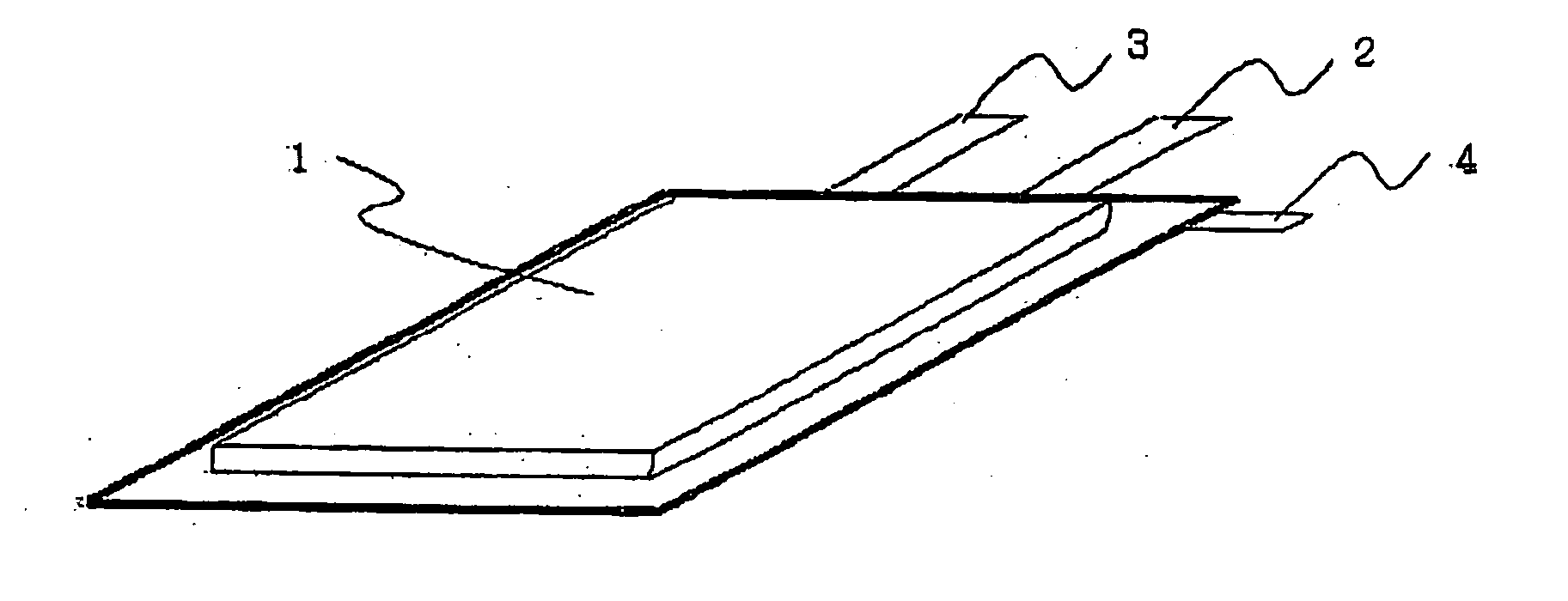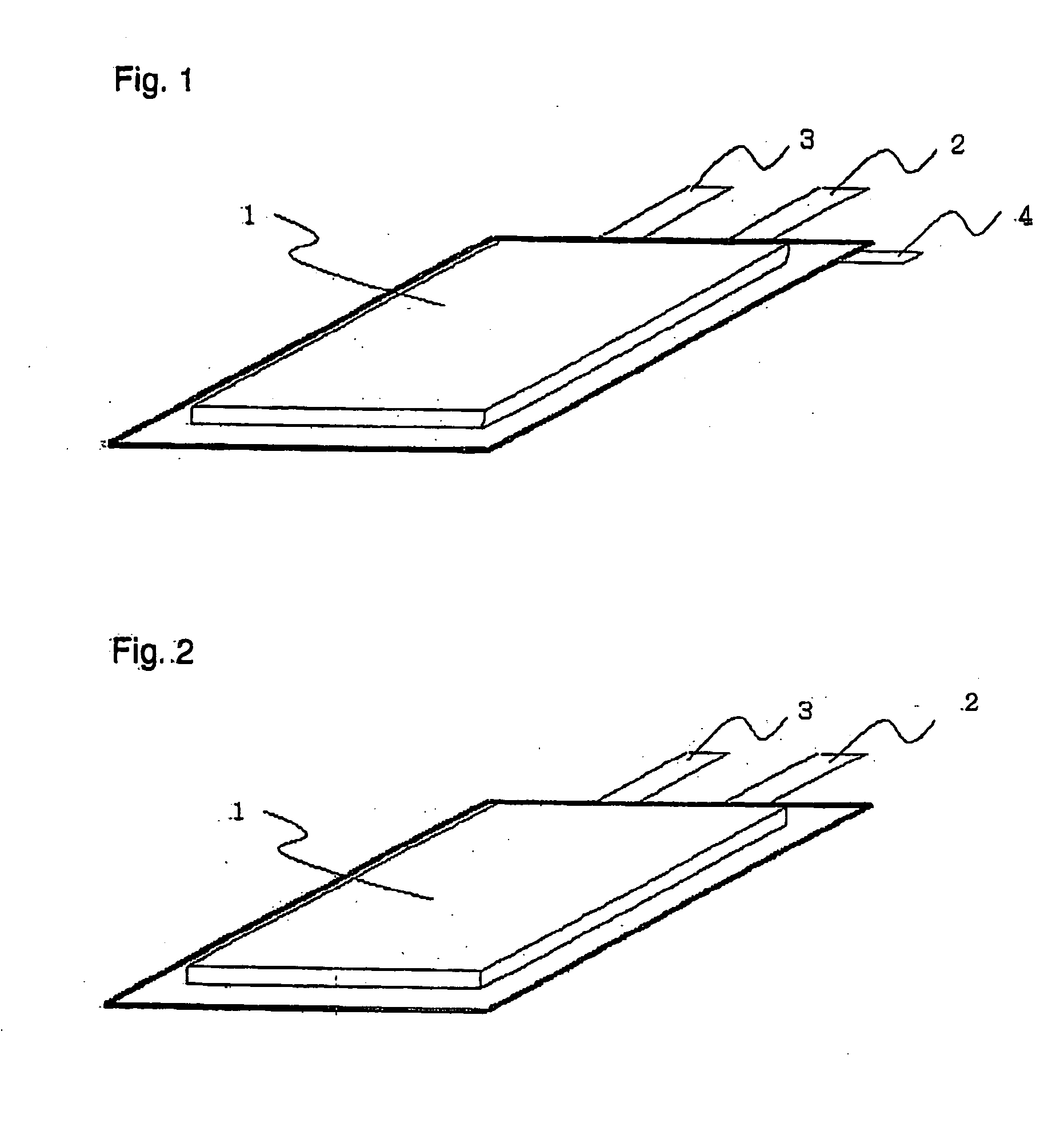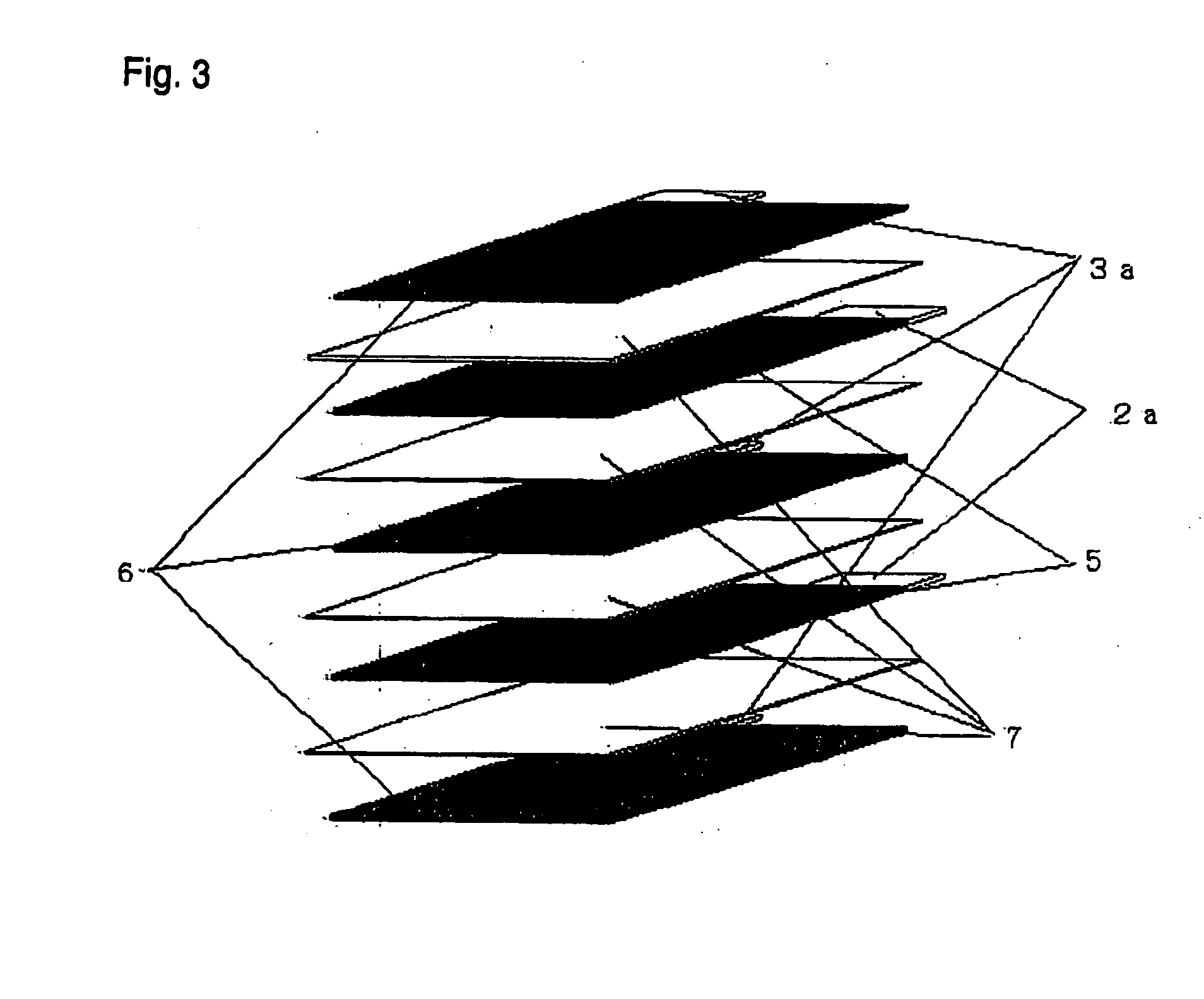Secondary battery having third terminal other than positive and negative electrode terminals and battery comprising it
- Summary
- Abstract
- Description
- Claims
- Application Information
AI Technical Summary
Benefits of technology
Problems solved by technology
Method used
Image
Examples
Embodiment Construction
[0026] Referring to FIG. 1, flat laminate-film secondary battery of an embodiment of the present invention 1 has third terminal 4 in addition to positive electrode terminal 2 and negative electrode terminal 3. FIG. 2 illustrates a conventional flat laminate-film secondary battery.
[0027] Flat laminate-film secondary battery 1 of the present embodiment is constructed as described below.
[0028] First, anode elements 5 and cathode elements 6 are alternately stacked with separators 7 interposed between them, thereby forming an electric-power generating element 8 as shown in FIG. 3.
[0029] Next, positive electrode terminal2 and negative electrode terminal 3 are attached to uncoated sections (electrode collectors) 2a and 3a, free of active material, of anode elements 5 and cathode elements 6, respectively, as shown in FIG. 4.
[0030] Next, third terminal 4 is directly connected to either one of uncoated sections 2a and 3a of anode elements 5 and cathode elements 6, respectively, of electri...
PUM
 Login to View More
Login to View More Abstract
Description
Claims
Application Information
 Login to View More
Login to View More - R&D
- Intellectual Property
- Life Sciences
- Materials
- Tech Scout
- Unparalleled Data Quality
- Higher Quality Content
- 60% Fewer Hallucinations
Browse by: Latest US Patents, China's latest patents, Technical Efficacy Thesaurus, Application Domain, Technology Topic, Popular Technical Reports.
© 2025 PatSnap. All rights reserved.Legal|Privacy policy|Modern Slavery Act Transparency Statement|Sitemap|About US| Contact US: help@patsnap.com



